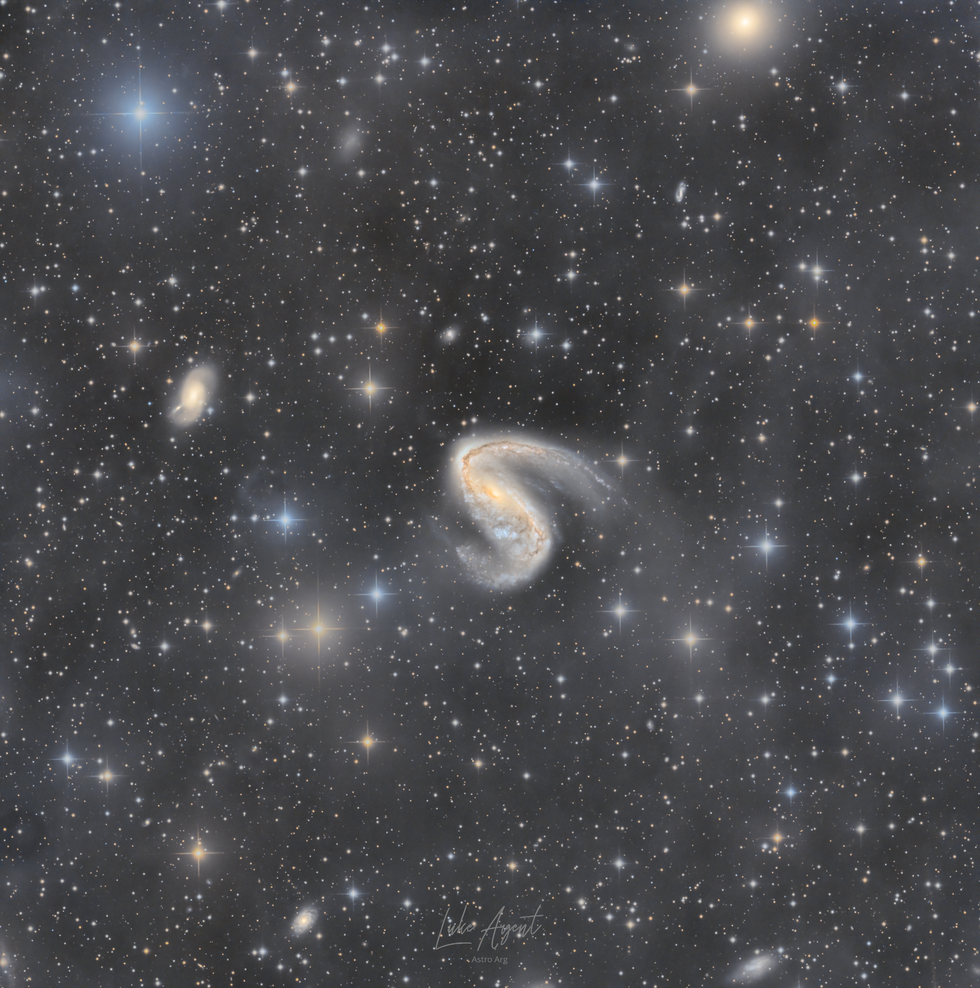Meathook Galaxy
Meathook Galaxy
Scientifically designated as NGC 2442 and 2443. Also known as the Cobra and Mouse galaxy.
It is found in the Southern Hemisphere constellation of Volans, and approximately 50 Lightyears away from Earth.
Originally it was believed to be 2 objects when discovered, the northern part of the galaxy NGC 2442 and the southern part NGC 2443.
However, later observations noted this was a single object. This is a distorted galaxy - it is likely due to close encounter with a much smaller but unseen galaxy. The gravitational interactions between the two galaxies stretched out one of the spiral arms.
From NASA/ESA:
Dotted across much of the galaxy, and particularly in the longer of the two spiral arms, are patches of pink and red. This colour comes from hydrogen gas in star-forming regions: as the powerful radiation of new-born stars excites the gas in the clouds they formed from, it glows a bright shade of red.
The interaction with another galaxy that gave the Meathook Galaxy its unusual asymmetric shape is also likely to have been the trigger of this recent episode of star formation. The same tidal forces that deformed the galaxy disrupted clouds of gas and triggered their gravitational collapse
It is found in the Southern Hemisphere constellation of Volans, and approximately 50 Lightyears away from Earth.
Originally it was believed to be 2 objects when discovered, the northern part of the galaxy NGC 2442 and the southern part NGC 2443.
However, later observations noted this was a single object. This is a distorted galaxy - it is likely due to close encounter with a much smaller but unseen galaxy. The gravitational interactions between the two galaxies stretched out one of the spiral arms.
From NASA/ESA:
Dotted across much of the galaxy, and particularly in the longer of the two spiral arms, are patches of pink and red. This colour comes from hydrogen gas in star-forming regions: as the powerful radiation of new-born stars excites the gas in the clouds they formed from, it glows a bright shade of red.
The interaction with another galaxy that gave the Meathook Galaxy its unusual asymmetric shape is also likely to have been the trigger of this recent episode of star formation. The same tidal forces that deformed the galaxy disrupted clouds of gas and triggered their gravitational collapse
SPECIFICATIONS
Telescope
Planewave CDK24
Camera
CHI-1-CCD - FLI PL 9000
Location
El Sauce Observatory, Río Hurtado, Coquimbo Region, Chile
Date of observation
December 2022
Filters
Astrodon LRGB
Processing
Pixinsight
Credits
Telescope Live (Data), Luke Argent (Processing), Adam Block (LRGB Workflow)


